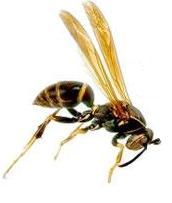|
 Keynote Speakers Keynote Speakers
LA-WASP'2009 will have two keynote speakers:
You can see below the title and abstract of their talkings.
-
Research Challenges in Aspect-Oriented Modeling
Prof. Jon Whittle, Chair of Software Engineering, Lancaster University
Abstract:
It is now almost ten years since the first papers started to appear on "aspect-oriented modeling" (AOM). Since then, there have been a plethora of different techniques and approaches, all of which aim to specify, reason about and generate code from models of aspects. Many of these techniques share characteristics with other model-based modularisation techniques, such as software product line modeling. Recently, the aspect-oriented modeling community is reaching somewhat of an impasse -- the core techniques for model composition have been more-or-less identified but massive challenges remain related to aspect reusability, aspect interactions, and aspect usability. In this talk, I will attempt to summarize progress to date on AOM, will rationally reconstruct how different AOM techniques relate to each other, and will outline a number of key challenges that AOM researchers face. Hopefully, these insights will act as a "call to action" to the next generation of researchers in AOM.
-
Are your concerns in "good shape"? - Observing crosscutting patterns in evolving software systems -
Dr. Alessandro Garcia, PUC-Rio
Abstract:
It is often claimed that the mere presence of crosscutting concerns leads to harmful software instabilities, such as ripple effects, increased coupling of software modules, and higher rate of observed faults. As a result, there is nowadays a growing variety of tools to support the identification and representation of crosscutting concerns in software artifacts. However, there is not much knowledge on which specific types of crosscutting concerns are likely to deteriorate design stability. In addition, little knowledge is also available about how crosscutting properties, observable in early software artefacts, are correlated with design instabilities.
In this talk, we will discuss our ongoing work on the categorisation and observation of recurring patterns of "crosscutting shapes" in evolving software systems. In particular, we have performed some exploratory analyses to understand whether: (i) certain categories of crosscutting patterns in source code are good indicators of harmful software instabilities, (ii) observation of "early" crosscutting patterns can help to anticipate further design stability impairments, and (iii) aspect-oriented decompositions were (un)able to modularise harmful crosscutting patterns. Finally, we will discuss some open research questions on the interplay of crosscutting patterns and design stability.
|